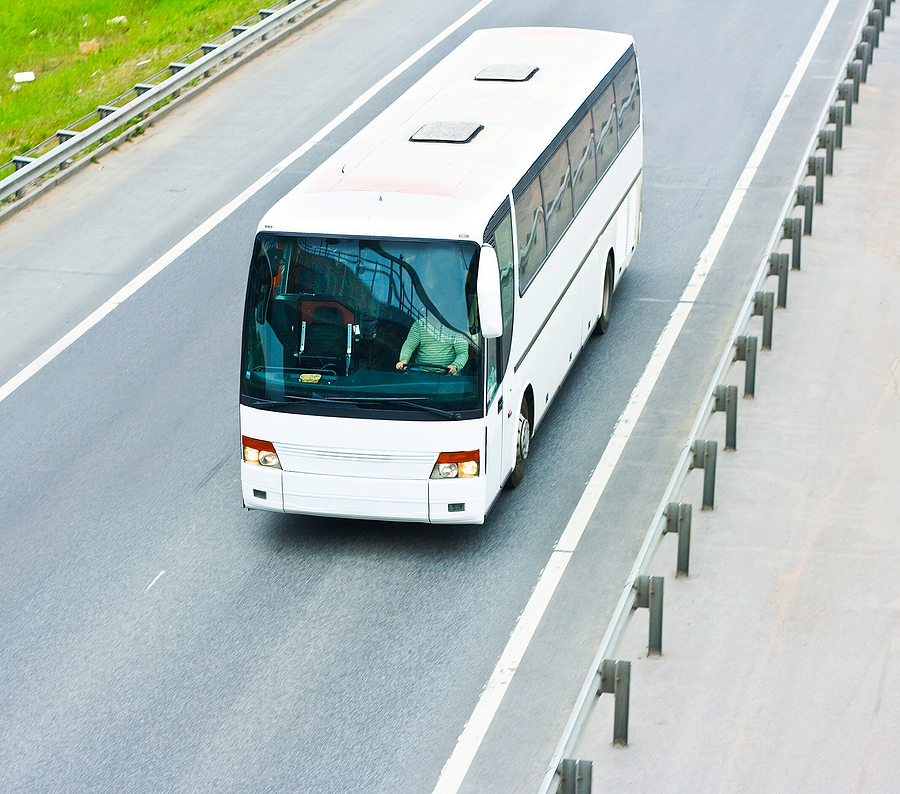Safety standards to make large buses easier for passengers to escape after a crash have not been adopted 15 years after accident investigators called for new rules.
A tractor-trailer truck and a bus transporting high school students collided late Thursday near Orland, Calif. Ten people were killed in a fire that consumed both vehicles. Someone kicked out a bus window, and many of the 40 or so students aboard squeezed through before the vehicle burst into flames.
The National Transportation Safety Board, which investigates transportation accidents, recommended in February 1999 that federal regulators issue new standards for large buses, also known as motorcoaches, so that after an accident passengers can easily open windows and emergency exits.
NTSB Chairman Deborah Hersman raised the issue again at a 2011 congressional hearing, saying the recommendation was one of many related to motorcoaches that regulators hadn’t acted upon.
Legislation passed by Congress the following year asked the Transportation Department to conduct research and testing on ways to prevent or mitigate fires in motorcoaches, as well as improve evacuation. The law leaves it up to the secretary of transportation whether new standards are needed.
The National Highway Traffic Safety Administration, which sets vehicle standards, has been working on bus evacuation regulations since 2007, but it has not offered a proposal yet, the agency said in a statement Friday.
The aim of the regulations NHTSA is working on is “to ensure evacuation in adequate time under different emergency situations for various occupant groups, including children and the elderly,” the agency said.
The accident board made its recommendation on easy-to-open windows and exits after a tour bus following the trail of the Underground Railroad used by American slaves before the Civil War drifted off Interstate 95 near Petersburg, Va., in 1997, rumbled down an embankment and overturned in a river.
Because the bus was overturned and partially submerged, passengers had to evacuate by standing on the seats, pushing up on the emergency windows, and climbing out and onto the top of the bus. Each of the emergency windows on the bus was hinged at the top, allowing the window to swing open when the emergency release bar was activated. Tests performed by the manufacturer after the accident indicated that an upward force of 85 pounds was needed to fully open an emergency exit window with the coach lying on its side.
Some passengers said that, because of their height or the window weight, they were unable to push the windows open after unlatching them.
Safety advocates say the agency has historically been slow to respond to safety recommendations involving motorcoaches. Last November, NHTSA issued a rule requiring seat belts on new motorcoaches for the first time. Accident investigators first recommended all large buses be equipped with such belts 45 years earlier in response to a fiery crash that killed 19 passengers near the Mojave Desert town of Baker, Calif.
“Unfortunately, motorcoach safety has historically been an orphan at NHTSA,” said Jim Hall, the former accident board chairman who signed the 1999 recommendation. “This is the transportation that carries primarily older people, students and low-income people. It hasn’t been a priority (for regulators).”
Former NHTSA Administrator Joan Claybrook said the bus industry fought with safety advocates “like cats and dogs” to prevent “hard deadlines” in the 2012 law for regulations on things like easy-to-open windows and exits.
In NHTSA’s defense, Claybrook said that “if they aren’t told it has to be done, they are going to put it on the backburner because they have 400 other things to do today.” She said the agency is severely underfunded with a budget of $134 million a year to do research, testing and drafting of regulations for all vehicles, including passengers cars and trucks.
Victor Parra, president and CEO of the United Motorcoach Association, said the NHTSA must act before the bus industry can make upgrades to windows and doors since buses are built to the agency’s specifications.
The nation’s fleet of 29,000 motorcoaches carry about 700 million passengers a year, comparable to the domestic airline industry.
Was this article valuable?
Here are more articles you may enjoy.


 Consulting Firm McKinsey to Pay $650M to Resolve Criminal Opioid Probe
Consulting Firm McKinsey to Pay $650M to Resolve Criminal Opioid Probe  US House Task Force Releases ‘Blueprint’ for Federal AI Responsibility
US House Task Force Releases ‘Blueprint’ for Federal AI Responsibility  Cargo Theft Surges as Holiday Season Approaches, Verisk Says
Cargo Theft Surges as Holiday Season Approaches, Verisk Says  Baltic Sea Countries to Check Insurance on Tankers Moving Russian Oil
Baltic Sea Countries to Check Insurance on Tankers Moving Russian Oil 